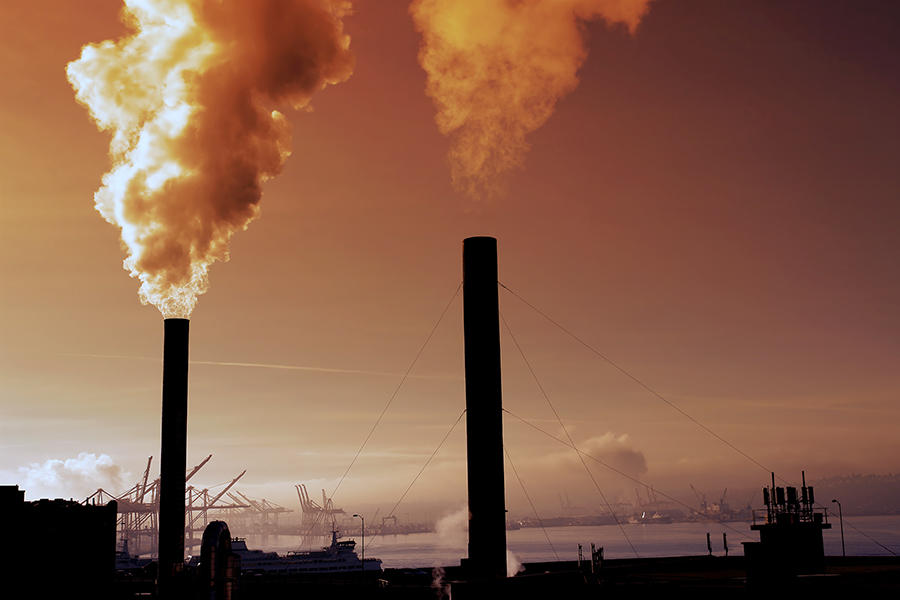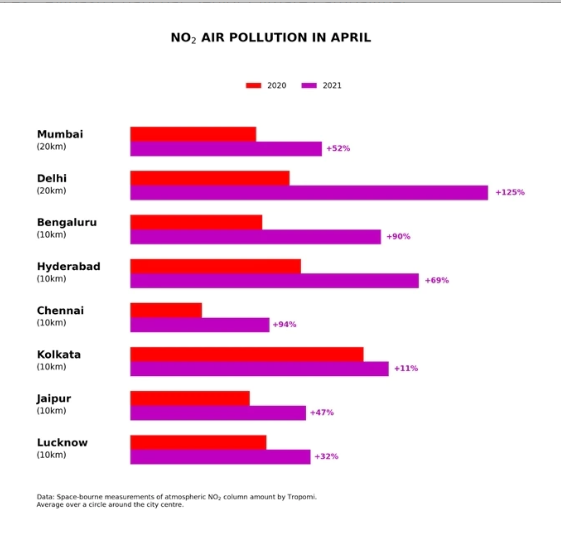Last year, under lockdown, when restrictions were put on in the entire nation, it saw a tremendous decrease in its pollution levels. We all witnessed that the air was fresher and more vibrant than before. The sky was dancing with clarity, the rivers appeared to be cleaner than before and some new species also started popping up at the most unusual places. Indians were enjoying every bit of it.
But according to reports, no such change in the pollution levels and health of the environment has been observed during lockdown 2.0. India is painting a gloomy picture due to the air pollution crisis even after restrictions on movement and industrial activities.
According to the latest report released by Greenpeace, many states in India have started facing poor quality of air. In fact, the National capital, Delhi has seen a jump of 125% in its NO2 levels during the lockdown this time. Coronavirus’ deadly second wave has started to get vanished slowly from Delhi but the air quality of it has begun to worsen.
Several states are facing the pollution problem but India’s Capital, Delhi has the worst quality of air to inhale. As compared to the corresponding month in 2020, in April 2021, Delhi’s air took a massive up of 125 percent in Nitrogen Dioxide (NO2) concentrations.
The report known as “behind the smokescreen” states that one year after initial Covid-19 lockdowns lowered the air pollution in several Indian cities, NO2 pollution increased in India’s 8 capital cities with more than 2 million citizens. The Researchers have blamed industrial activity and transportation for the spike in pollution as these services were partially available during lockdown 2.0 in some regions. They have educated them to switch to cleaner sources of energy.

On Wednesday, Delhi’s Air Quality Index remained in the bad category with PM 2.5 concentration at 240 and nitrogen dioxide level is at around 140.
Delhi is the most affected state from pollution but according to satellite observations, other Indian cities also documented an equally harmful increase in NO2 levels in 2021. Chennai is the worst affected city after Delhi with a 94 percent spike in pollution level. It is followed by Bengaluru which also saw a rise of 90 percent. Hyderabad saw a spike of 52 percent followed by Mumbai with a 52 percent increase in NO2. Jaipur also witnessed a 47 percent rise and it is followed by Lucknow’s 32 percent increase in NO2.

Senior Climate Campaigner in Greenpeace, Avinash Chanchal told a leading daily, “The air quality levels in these cities are alarming. People saw clean skies and breathed fresh air during the nationwide lockdown though it was an unintended consequence of the pandemic. The disruption caused by the Covid-19 pandemic is a case to transition to cleaner, equitable and sustainable decentralized energy sources.”
Pointing towards the rush that happened in cities like Delhi for Oxygen concentrators and ICU beds, Chanchal further added, “The lockdowns failed to check pollution this time around as they were partially implemented due to the critical and tragic situation across states.”
Greenpeace stated in its report, “Ending fossil fuel use is essential for reducing NO2 air pollution and the associated burden on our health. Governments and city authorities must accelerate the transition to renewable energy and invest in a green recovery, including a switch to wind and solar energy and building efficient public transport, cycling, and pedestrian-friendly, clean transport-oriented cities.”

According to a 2020 analysis by NITI Aayog and the International Energy Agency (IEA), India’s energy demand will get double by 2040, and electricity demand may triple, while Indian oil consumption is expected to grow faster than that of any other major economy. This is a cause of concern as it puts pressure on the government to switch to non-renewable sources of energy as fast as possible. It also calls for institutionalizing an energy policy.
Let’s see how the Government will deal with it and what measures will it come up with.
